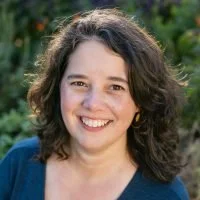Photo courtesy of Siri Carpenter and The Open Notebook at https://www.theopennotebook.com/editorial-team/
SEptia nurmala
Perhaps the distance from working as a science journalist to being a community founder seems pretty wide. This journey, from one occupation to a very different one, is a leap that not many science journalists often ponder. But for Siri Carpenter, writing about science and fostering a community for her fellow writers is a place to put her love.
The Journal of Young Investigators had the pleasure of interviewing Carpenter from The Open Notebook, a non-profit organization serving science journalists to improve their skills. Carpenter co-founded The Open Notebook in 2010 and is now serving as the editor-in-chief.
The Open Notebook aims to level the playing field for science journalists through a number of different ways. One of their focuses is publishing articles about the craft of science journalism every week. From spilling all the secrets of kick-starting freelance to explanations about different scientific studies, The Open Notebook covers the nitty gritty of doing science journalism.
“Yesterday, we published [an article] about how media organizations, publications, and editors can protect writers and sources who are experiencing digital harassment or online harassment. Another article that we published recently was about reporting on assistive technologies for people with disabilities,” Carpenter said. Other than their massive volume of publications, The Open Notebook also stores successful pitch letters that can be used by other science journalists as references. “We have a series of online courses that are free and we have a number of different mentoring programs and run workshops on science writing and science editing,” Carpenter continued. “It all has to do with helping journalists improve their skills.”
Before fully focusing on her role at The Open Notebook, Carpenter had her fair share of freelancing. Her science writing trajectory started when she was elected as one of the fellows at the American Association for the Advancement of Science (AAAS), where she was placed at the Richmond Times Dispatch in Virginia. Having tasted science journalism for the first time during her placement, it became clear to her that she wanted to pursue that path. “Science writing is a great opportunity to feed your curiosity and a lot of science writers have quite a lot of variety in the topics that they cover, so that’s really fun,” she said. She admitted that she didn’t freelance right away after the AAAS fellowship, but rather settled for a job in APA Monitor on Psychology magazine after finishing her PhD.
Carpenter’s early years of freelancing transpired right after her job at APA’s magazine, where she pivoted to writing for multiple magazines. Her biggest challenge at the time was juggling between schedules. “When I was starting out freelancing, I had young children so I was also trying to juggle childcare and getting the work done. It was a constant battle to try to balance work and home and parenting and time for myself,” she recalled. Despite the fluctuating hours defining her freelance work, Carpenter admitted that freelancing has its own appeal, saying “you have so much freedom and autonomy because you don’t have a single boss or employer.”
Even after so many years of science writing, Carpenter emphasized that the path to becoming a science writer is not an aim that one should expect to be good at right away. It takes time to learn the skills and one should practice a lot. When asked what advice she would give to undergraduates wanting to enter science writing for the first time, she remarked that beginning a PhD program is not the fundamental of becoming a science journalist, sharing that “I would say it’s very rare that it makes sense to start a PhD program if you already know that you want to be a science writer.” Carpenter holds a PhD degree in psychology because she was already halfway done in the program by the time she started science journalism. “There are different ways that you can learn the skills of science writing [other than starting a PhD program], look for internships and any opportunity to write and edit in local, university, or alumni publications,” she added.
While The Open Notebook offers many different features for science journalists to explore and learn, Carpenter shared that she personally learned so much by leading the organization. “We have interviewed hundreds of people about different aspects of their process, and I’ve learned so much from just reading and editing these stories,” she said. While initially not trained as a data journalist, she was able to pick up a thing or two about data journalism through the stories published in The Open Notebook. “I’ve learned a lot about story structure, narrative, editing, and grant writing,” she chuckled, noting that she continues learning about grant writing to seek funding for the organization.
Both through the lens of a journalist and an editor, one thing that particularly struck her is the abundance of kindness in a field where publishing a large volume of articles is the main currency. “Over the years, something that I have seen demonstrated over and over again is the intense generosity that people in the science writing community have for helping one another learn and grow,” she said. And this sentiment of community is a fundamental value at The Open Notebook, demonstrating that the work of a single writer is often the culmination of an entire group of supporters that help craft that perfect story.

